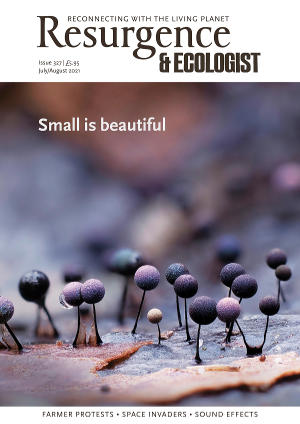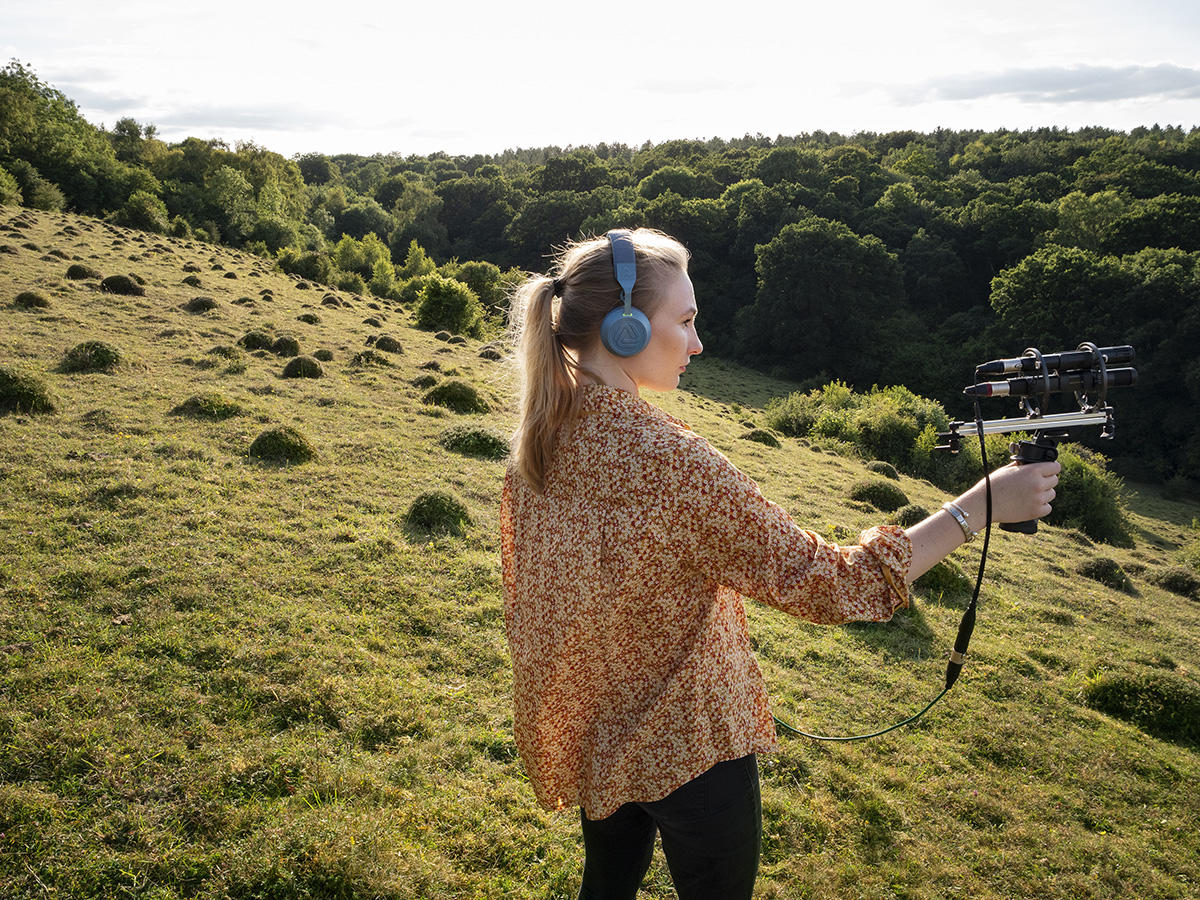During the past year, when locking down has meant slowing down, many of us have rediscovered the power of our five senses and been fascinated by the joy that natural sounds can evoke. Reduced noise pollution from traffic and fewer planes overhead has helped us reconnect with a forgotten soundtrack: birdsong, the wind rustling through leaves, rain on a windowpane and even the sound of our own breath on those daily exercise walks. Happily, this serendipitous reawakening is precisely what makes Australian artists Sonia Leber and David Chesworth’s new show What Listening Knows so germane and a treat for our newly honed aural skills.
Displayed across three enormous screens, the video, combined with a spatial soundscape, employs ‘the microphone’s gaze’ to encourage us beyond the comfort zone of the ocular or camera lens, into an acoustic dimension. This mesmerising work is being premiered from 17 July to 5 September 2021 at Messums Wiltshire, a 13th-century monastic tithe barn lovingly restored to create a gloriously atmospheric gallery space.
The pair’s installations have been intriguing audiences for more than 20 years, including a video work in an empty coal bunker and, at the 2015 Venice Biennale, one in the ropemakers’ corridors of a shipyard. But the artists were particularly excited by the cathedral-like dimensions of the Wiltshire barn, thought to be the largest of its type in the UK and running to about a third of an acre of floor space. Leber says: “It has opportunities to surround the audience in a detailed multi-channel sound environment.”
Leber and Chesworth describe themselves as cultural investigators, using video, sound, architecture and public participation to explore places undergoing social change, from the real spaces in which they exist to the realm of the imaginary. Leber explains: “When we arrived in the UK in mid-2019, we had just emerged from another project following scientists digging in the red soils of Australia’s arid interior, battling flies and 38-degree heat. In Wiltshire we were drawn to contrasting environments with unique landforms and geologies: hillsides with lumpy anthills (emmet butts), chalk paths and ridges, flint piles, craggy stone forms of crumbling castles, dense forests, and the branches of a fallen 700-year-old tree.”
The exhibition features three performers with microphones and headphones acting as ‘field recordists’. Prompted by Leber and Chesworth to interrogate the Wiltshire landscape physically from non-typical perspectives, the actors sensed the world around them: “We were very keen to film these environments with an ‘acoustic consciousness’, letting sound be our rationale for guiding camera movement, as if the camera was detached from the eye. The chalky flint-filled Wiltshire environment provided a range of curious landforms that we could explore with our microphones and camera choreography.”
The sounds are both rhythmic and otherworldly, influenced by Chesworth’s early work with post-punk group Essendon Airport in the 1970s. The duo reveal: “In What Listening Knows, we wanted our soundtrack to reference the military aircraft we sometimes heard when in the forests, originating from the airfields on the plain, with sonic drones from aeroplanes twisting and circling across the sky. Rather than incorporating the sounds of the aircraft themselves, we worked with singers from Salisbury Cathedral Choir, who instantly knew how to replicate the haunting aural canopy with their voices.”
Our post-Covid heightened senses should ensure that we have a much deeper appreciation of this approach, enhanced by the DNA of the building itself. The thatched tithe barn was originally constructed for the Abbess of Shaftesbury, Æthelgifu, King Alfred’s daughter. It forms part of a large court of elaborate buildings that celebrated the abbey’s wealth and influence in the area through its architecture. The gravity-defying oak roof trusses are an awe-inspiring engineering feat even now. In the five years since restoration it has provided a dramatic foil for exhibitions of work by artists such as Grayson Perry and Elisabeth Frink.
Messums Wiltshire is the rural offshoot of a prestigious London Cork Street gallery whose artists are increasingly expressing the global craving for environmental change. Over the past year the gallery has been running a series of stimulating online discussions and exhibitions with a strong green agenda. Recent (still available online) and forthcoming talks in the gallery’s Active Environmentalism series are by Kurt Jackson, Isabella Tree, Tim Smit and Ben Goldsmith.
As restrictions on socialising are lifted, it will be interesting to observe how the experience of Covid has altered our perspectives of art. Leber explains: “We became like the pre-industrial humans, more attuned to sonic cues that they often relied on for survival. We hope that our audience at Messums Wiltshire will respond using their new-found (or longstanding) listening acuity.”
For more information, visit: www.messumswiltshire.com and www.leberandchesworth.com/filmworks/what-listening-knows







